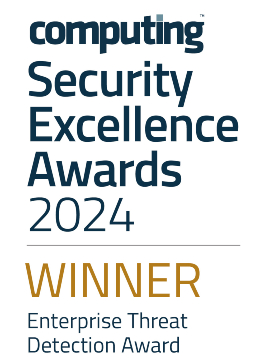
Threat Modelling
Identify and prioritise security risks with LRQA's threat modelling services, enabling proactive measures for enhanced cyber security maturity
Evaluate your system from an attacker's perspective
In today's ever-evolving digital landscape, the importance of proactive cyber security cannot be overstated. Threat modelling offers a structured approach to identifying, understanding, and mitigating potential security threats. By evaluating your systems from an attacker's perspective, threat modelling helps you prioritise the risks that could impact your business, allowing you to implement appropriate defences.
LRQA’s Threat Modelling service makes that easy. Combining our expertise with cutting-edge technology, we help you find potential vulnerabilities in your system or application by identifying possible attack scenarios and analysing their potential impact.
Award-winning expertise
Our cyber security team continues to achieve multiple vendor certifications, highly respected industry accreditations and international accolades, demonstrating the breadth, depth and impact of their services.


The benefits of Threat Modelling
 A proactive approach
A proactive approach
Identify potential vulnerabilities and take preventative measures before an attack occurs.
 Cost-effective
Cost-effective
Prioritise vulnerabilities and minimise the cost of implementing cyber security measures.
 Comply with regulatory requirements
Comply with regulatory requirements
Comply with regulatory requirements by identifying potential vulnerabilities and taking the necessary regulatory measures.
 Build confidence
Build confidence
Understand the security implications of your design, code and configuration choices.
About LRQA’s Threat Modelling service
Threat modelling is often conducted during the design stage of a new application though it may also occur at other stages and should be an ongoing process.
The threat modelling process involves three main steps:
1. Identifying the flow of data through the system
This involves documenting how data moves through different parts of the system, including where it originates, how it is processed, and where it is stored. By doing so, potential points of attack can be identified and vulnerabilities in the system can be pinpointed.
2. Documenting potential threats to the system
This crucial step involves considering all possible ways that an attacker could compromise your system's security and documenting these potential threats.
For example:
STRIDE - This is an acronym for each of the six threat categories it deals with: Spoofing, Tampering, Repudiation, Information Disclosure, Denial of Service, and Elevation of Privilege.
PASTA - Process for Attack Simulation and Threat Analysis (PASTA) is a risk-based threat modelling methodology where there is a focus on risks that can affect the business.
This can help you prioritise which threats need to be addressed first and which security measures should be implemented.
3. Adopting potential security controls to mitigate potential threat
Lastly, implement security measures to mitigate the identified threats. They can vary depending on the type of threat and the system or application being modelled.
Examples include:
- Access controls: These controls limit who can access certain parts of a system or application, including the use of password authentication, two-factor authentication, and role-based access controls.
- Encryption: Encryption is the process of encoding data so that it can only be read by authorised parties. This helps protect sensitive data from being accessed by unauthorised users.
- Firewalls: Firewalls are hardware or software systems that monitor and control incoming and outgoing network traffic. They can be configured to block traffic from known malicious sources or limit access to certain types of traffic.
Why work with us?
Specialist expertise
Our cyber security experts hold multiple vendor certifications and accreditations as well as highly respected industry accreditations from CREST, the PCI SSC, ISC2, BCI, Chartered Institute of IT, and NCSC CHECK.

Industry leadership
We lead and shape industry on advisory boards and councils including the PCI SSC Global Executive Assessor Roundtable and CREST councils in the Americas, Asia, EMEA and the UK. We are certified by a range of governing bodies including the payment card industry and are approved as a Qualified Security Assessor.

Everywhere you are
Operating in over 55 countries, with more than 250 dedicated cyber security specialists and over 300 highly qualified information security auditors across the world, we can provide a local service with a globally consistent dedication to excellence.

Award winners
We have been recognised for the breadth and depth of our services – including the TEISS Award for Best Penetration Testing Service in 2024, Enterprise Threat Detection and Cloud Security awards at the Security Excellence Awards 2024 and the Stratus Award for Best Managed Cloud Security Service.

The world leader in CREST accreditations
We are proud to be the only organisation in the world with a full suite of accreditations from The Council of Registered Ethical Security Testers (CREST).
Our team of consultants have achieved the highest accreditations for Penetration Testing, Red Teaming, Incident Response services and Threat Intelligence. In addition, we were also the first organisation to be CREST accredited for our Security Operation Centre services.










